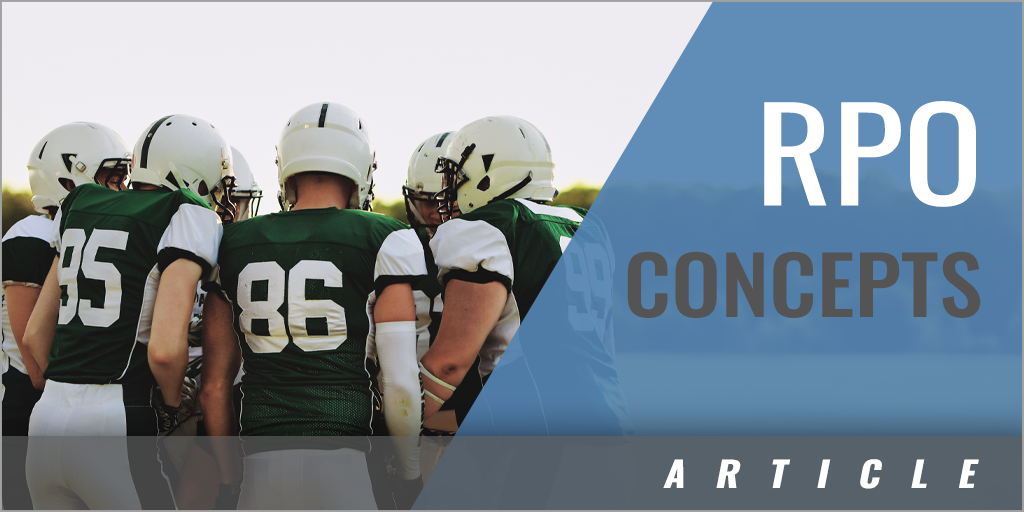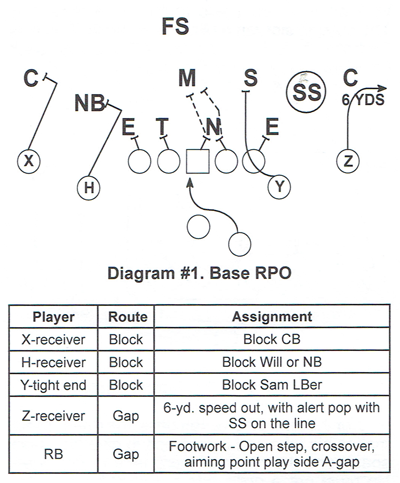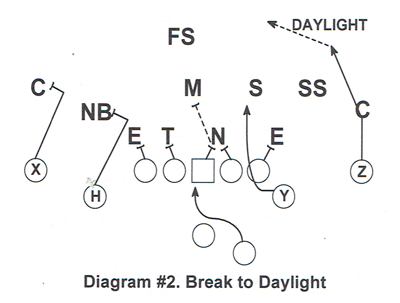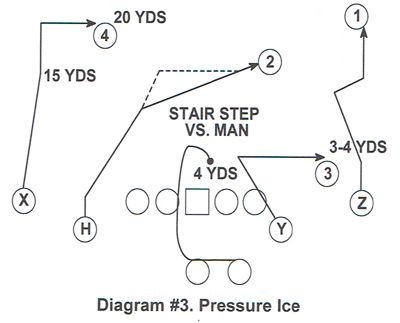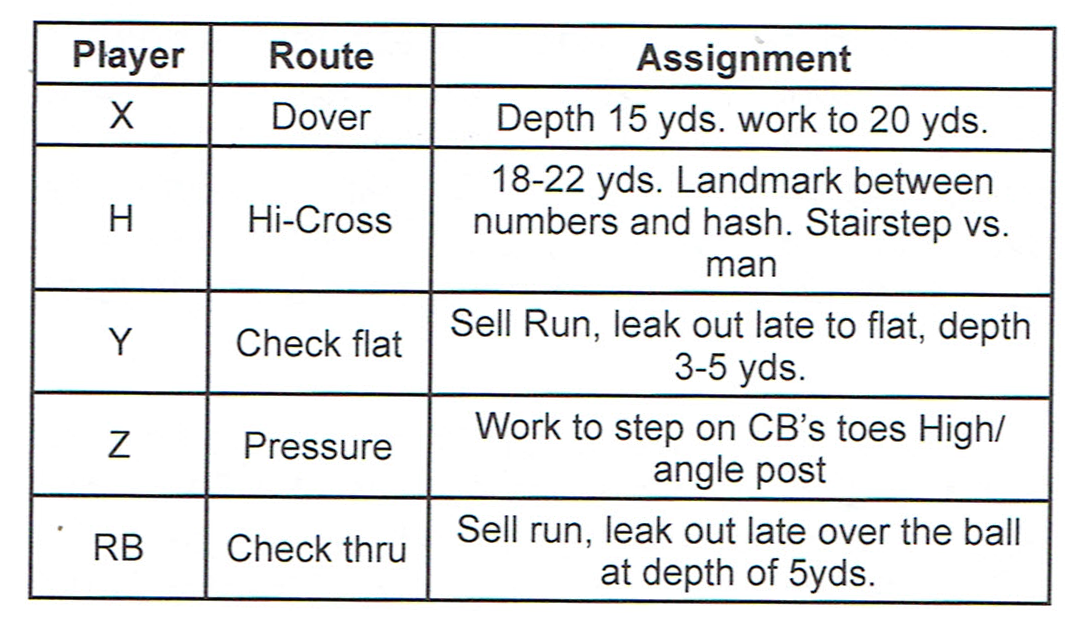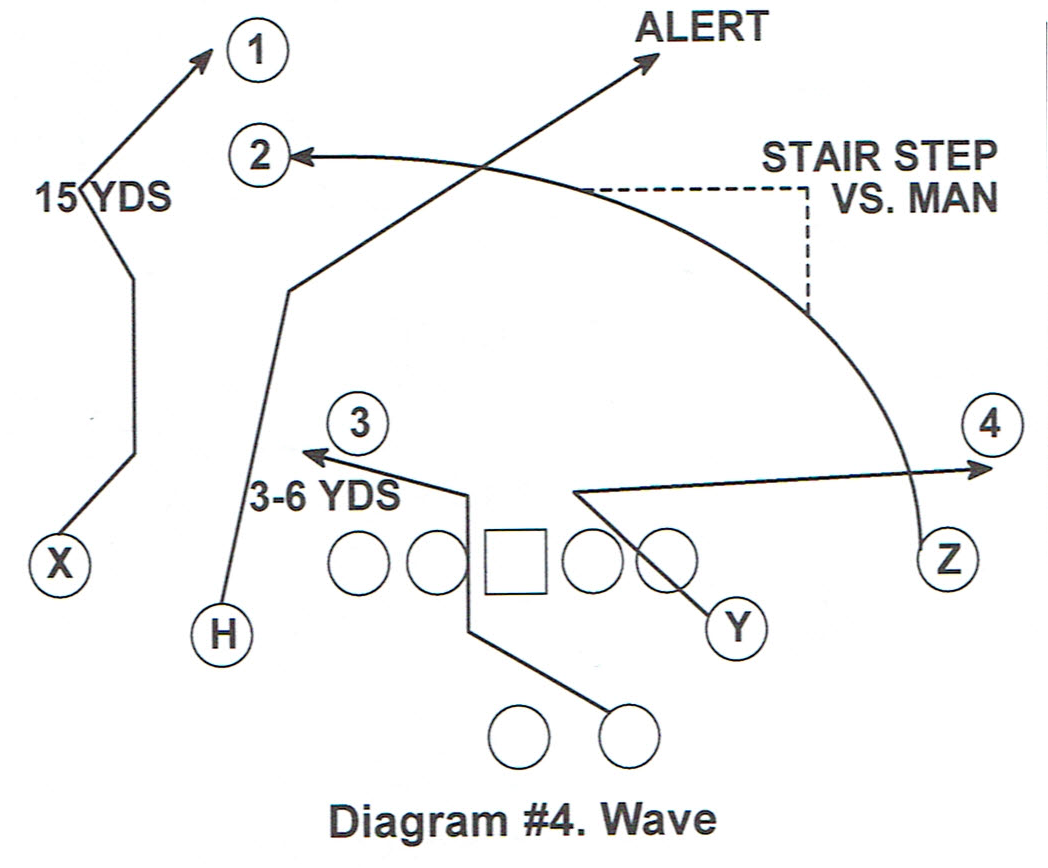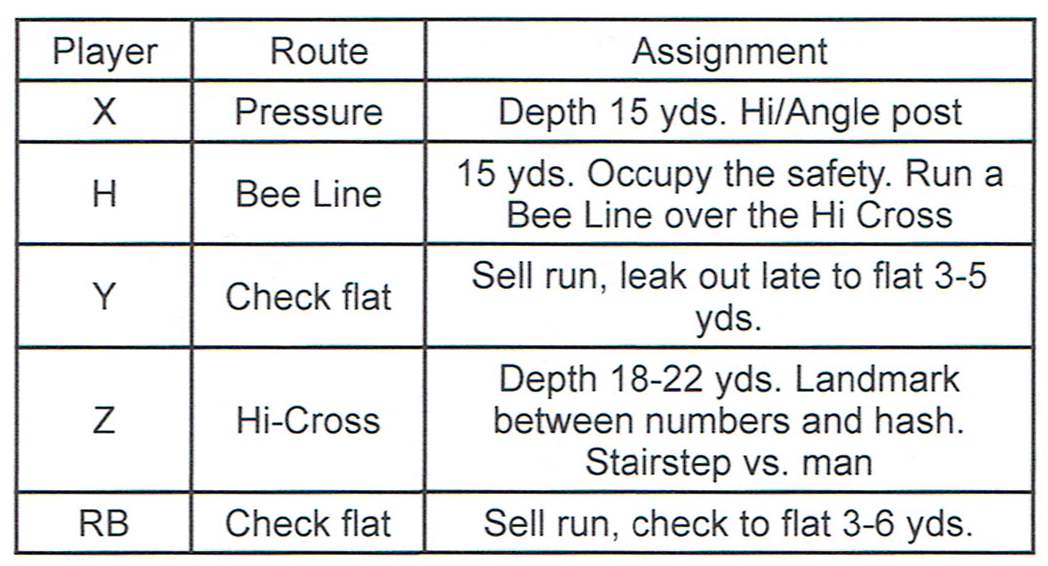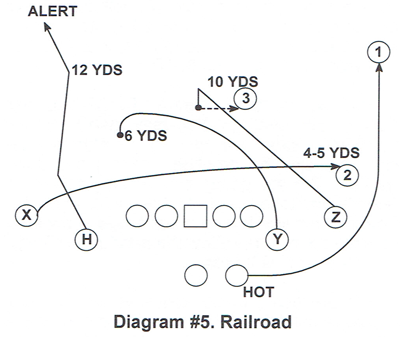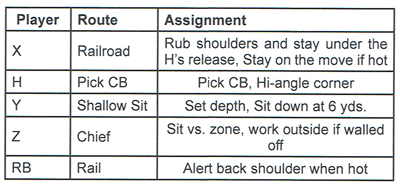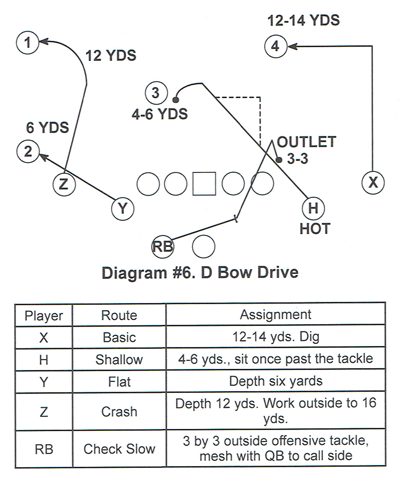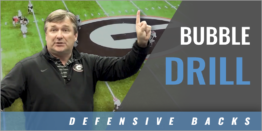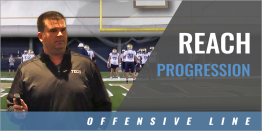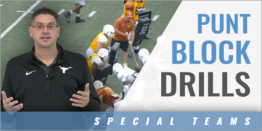|
By: Steve Sarkisian - Univ. of Texas Originally Published in the 2020 Nike Coach of the Year Clinic Manual - by Earl Browning Thank you it is great to be back in Atlanta. I was here two years with the Falcons, and I enjoyed my time. I have had an interesting ride as to the people that have mentored me and to the places I have been. I have gone from a prostyle offense with the Falcons to a running quarterback like Jalen Hurts for a year. Then back to the Falcons with Matt Ryan. Now I am in the whole RPO world with the things we are doing at Alabama. It has been an awesome ride. But more importantly to me is the 20 years of that experience I have gained. The more you do well on offense, the harder you are to defend. When people talk about Alabama football right now. they think RPO is all we do. Actually, the RPO offense is a very small portion of what we do. I remember sitting here 20 years ago as a young coach trying to figure out how I was going to run the offense. You want that certain thing that will make the big difference in what you do. But that one thing is just a piece of what you are going to do on the offensive side of the ball. There is a lot that goes into making Alabama a good football team. For the defensive coordinator. he cannot go into a game and say he is going to take away one portion of the offense's game plan. If RPO was all we did, it would make it easy for the defensive coordinator to come up with a game plan. We do so much more that makes it hard for him to defend us. I am going to get into some of the things we do and why we do them. The first thing I am going to talk about is our RPO system. Everyone thinks this is our base offense and all we do. There is a lot more to it. I want to get into it and show you how it builds. I want to start with a simple 2x2 formation. (Diagram #1) The X-receiver and H-back are to the wide side of the field. The Y-tight end aligns in a wing set outside the backside tackle. The Z-receiver is split to that side.
The quarterback reads the strong safety. If he is down, we are going to throw the 6-yard speed out. If he is in a 2-high safety look we are going to run the ball. If he walks up on the line of scrimmage, we have an alert call to the Z-receiver and he runs an inside breaking slant. What I am going to show you is not only utilized in college football. We were doing this with the Atlanta Falcons. I do not want to give you the impression that this play is only run in the college game. The Atlanta Falcons and Carolina Panthers to mention just a few of the pro teams that are running this offense. You can dress up the play with formations and motion. but it is a simple play. We can run bubble routes with the H-receiver instead of blocking. There are so many different things to do and still run the same play. We have adjustments that come off the base play. (Diagram #2) We want to give the Z-receiver a chance to "break to daylight." People that watch us play think we throw slants. We do not throw slants. We throw a route that is more like a glance route. The Z-receiver is breaking on his fourth outside step and is breaking to daylight.
What the Z-receiver does depends on what the defense does. If the corner is playing man-to-man, the receiver must win and get into the daylight. If they play Cover-3, he has to work into the window on the linebacker. If it is a Cover-2 and the corner is trying to trap the receiver, the Z-receiver has to wrap around the defender into the voided area to the inside on the linebackers. I do not want to seem too simplistic by showing the X and H receivers blocking. We can add any combination of patterns to that side also. I believe in running the football. I have never had a year where I did not have a running back gain 1000 yards. If you give the quarterback too many options, all you will do is throw the ball. In my opinion, if all you do is throw the ball you lose the identity of your program. You lose the identity of physicality and toughness which this game is built on. Football is a physical sport. That is one reason we put more blocking on our RPOs then people think. We all want to throw the ball because it is fun. However, in my opinion, RPOs are opportunity throws. It allows the quarterback to get some completions. At Atlanta, we ran this same kind of offense. but the featured receiver was our tight end. He was the receiver we chose to run this type of pattern. He had that knack for getting into the daylight. At Alabama, we have gotten into signaling route options to the single receivers. It was like going to the quick passing attack. but we are doing it from our RPOs. At Alabama, we averaged eight yards a play. A lot of that success was running the play-action pass with the illusion of RPOs. If the defensive coordinator is going into a game and feels he has to stop the RPO and also defend the run, he will get his middle of the field safety hanging at 10 yards. If they do that, they better be able to cover the post route. That pattern has become a very big deal for us. If you watched us play this year or watched the first play in the bowl game against Michigan, you saw this concept. On the first play, we gave the illusion of the RPO. The middle of the field safety broke up on the break to daylight receiver running the RPO route. We hit Jerry Jeudy with an 85-yard touchdown running a takeoff to the post. If you have levels to your RPOs, this is where the game gets to be fun. This is the same run as we used on the RPO. (Diagram #3) The tight end leads through as though he were going to block the Sam linebacker. He releases into the flat at 3 to 4 yards deep. The Z-receiver runs a pressure post on the corner. He wants to step on the defensive back's toes. The H-receiver runs a deep cross. The X-receiver runs a 20 yard in pattern.
I want the line, tight end, running back, and quarterback to make it look, feel, smell, and sound like RPO. I want everyone in the stadium to think here comes another break to daylight. out route, or slant. We are going to take our shots down the field.
The whole thing to me is how many layers in the offense we have. We want the layers and we want to build on those layers. We want to take the shot. If the safety stays deep and takes the post, we have the deep cross coming underneath him. The first option is the post with the deep cross as the second option. The tight end is the third choice and the X-receiver is the fourth choice. The running back over the ball is the check down receiver. We have another concept we use off the same idea. We use this against teams that cheat to the single receiver. (Diagram #4) We call this a "Wave." The X and H-receivers run big posts to the inside. The single receiver comes across behind the double post pattern to the opposite side of his alignment. These patterns are set to run against man-to-man coverages. If the defense plays cover-2 to stop the pass. we are going to run the ball and have had success.
We have to design concepts that will beat man-to-man coverage. That is the universal way to stop the RPO. Our schemes must beat man coverage. When you beat man coverage you create explosive plays. The game of football is about explosive plays. If you cannot create explosive plays it is going to be hard on the offense. I do not care if it is little league or pro football, you must create explosive plays.
To put 10 or 12 plays together without one of your guys screwing it up is hard to do. I know we have great coaches in the room. and I have been around some great coaches and putting long drives together is hard to do. We want the High Cross to look like the break to daylight. However. when we break on the High Cross, we want to create separation between the receiver and the defender. I want the receiver to run away from the defensive back. The receiver has to trust his speed and run. He is not going to get the ball on his break. He is going to get it across the field. The ball is not going to be completed until the receiver reaches the opposite hash/numbers area. One thing we will do is to "alert" the beeline post. That is, particularly against man coverage. He will break open on man coverage. The next level of this is the drop back. You cannot always run an RPO or play pass on first down. What are you going to do when you drop back to throw the ball? You are going to see man coverage. In a zone, the zone defenders get manipulated by the ride of the quarterback with the running back. Let me give a little history lesson about how I got started in my profession and got to where I am now. When I was at USC in the 2000s, we had Reggie Bush and LenDale White. We were a running and play-action passing team. I went to the University of Washington and they had Jake Locker there. They had been a read/option football team with the quarterback running the ball. I did not want to change everything. so I stayed with the read-option. Then along came Keith Price. He was a really good point guard in high school. However, he was not a great runner. We had to decide how to let him do what he did well and still work him into the offense. We decided to work him into the RPO world. After Washington, I went back to SC and had Cody Kessler as the quarterback. From there I went to Alabama and had Jalen Hurts. From there I went to the Atlanta Falcons and had Matt Ryan as the quarterback. I went back to Alabama and had Tua Tagovailoa. At what point is the offense about you or your players. I believe it is our responsibility as a coach to put our players in the best position to be successful. This is where the offense comes from. If you get into a drop back world, we may call the plays differently for certain players. I may call more of this for a Mac Jones type than I would for a Tua Tagovailoa. Tua can make RPOs work and is the best at signaling routes that I have ever seen. He can signal things that we did not work on in practice and make them work. Mac Jones is very detailed and works from A to B to C. This drop back pass is a staple based concept that we run. When we go into a game, we expect the defense to play man coverage. We are going to run a rub route against that type of defense. (Diagram #5) We will try to get the running back out first. He, in most cases. is matched up on a linebacker. We are going to run him on a wheel and look to him first.
In this pattern, we are going to pick with the H. Y, and Z. We are going to pick with the H-receiver on the corner. The X-receiver comes underneath the H-receiver and gets on the move across the formation. He is coming under the routes by the Y-tight end and the Z-receiver. The Z-receiver sits down at 10 yards over the ball. If no one is attracted to him he stays. If he gets someone on him. he works to the outside. This is not very elaborate, but that is what we do.
We run the play repeatedly with different formations and motions. It is the formations, motions, and shifts that make it unique. For me, it is all about the quarterback. I want to get him in a situation where he can be the best that he can be. That is why we do not change concepts. I am never going to out of the blue tell the Z-receiver to run a post route. I am never going to do that to our players. Our reads remain the same over and over again. The players come up with different ways to run the play, but I do not want to hear it. We run it the same way repeatedly. Railroad is what we do. If you watch us play, you will see us hit this at a minimum once a game. This is true progression football. We are not reading coverages. We go to the receiver that is open in the progression of the play. If the running back is open, we go to him immediately. If it is not there, we go to the X-receiver coming across the field. From there the Z-receiver is the third choice. The least defended player on the field in the passing game is the running back. This year Najee Harris caught over 30 balls and 7 touchdowns coming out of the backfield. If you watched LSU, their running back killed everyone coming out of the backfield catching the ball. When you go to your drop-back passing game, do not neglect the running back. People think you must have six-man protection, however, if you put him out, they better cover him. It does not have to be a flat route. Put the back on a wheel or rail pattern. That allows him to make a play and have opportunities down the field. I know that not everybody in this room is a spread RPO coach. Some of you guys still use two tight ends. There are four coaches in here that still use two tight ends. That is amazing. However, the defensive coaches on the first day of practice put the base defense in. They start against a two-back power set. All the stuff we did at Atlanta carried over from a two tight end set. You can still use this concept from under center and two tight ends. Not every pass has to be a vertical route. The underneath patterns are excellent. I am a firm believer and sometimes people are amazed at this fact. I do not like to throw the ball to a stationary target because I am as slow or as fast as Julio Jones at that moment. I want the receivers to catch the ball running. Let them do what they do.
My thinking is that the defense is trying to defend RPOs. How do they do it? They play man coverage. If the defense plays man coverage, the receiver is going to keep on the move and run away from the defender. Those patterns are generally down the field or crossing route throws. However, if we are not having success with the RPO game, all the other things get really hard on us. We have to build the layers of the offense. Even as the game progresses, we have to build the layers. This next concept is really important too. The other way for a defense to play the RPO is to play Cover-2 and use the corner to trap hard. We do not want the key defender in the RPO to be the extra defender in the run game. What we tried to do was build in a natural high/low pattern into the boundary. We had a little bit of run action with crosses coming into the boundary side. If they played man coverage, we had the cross coming into the middle. But we have to account for the defense trapping with the corner. Our quarterbacks this year did a better job of recognizing the trap coverage and still ran the RPO. This concept we called "D Bow Drive." (Diagram #6) The Z-receiver aligned into the boundary and ran a bend out at 12 yards getting depth down the field. The Y-tight end ran a six-yard arrow route into the boundary. The H and X-receivers to the backside ran a cross and a 12-14 yard dig route. The running back faked the run and checked out of the backfield. He checked for a blocking assignment and then released to the backside as an outlet pattern. 12-14 YDS If the defense plays man coverage on this type of play, we have a mover on the run with the H-receiver. However, we must account for the corner trapping to the boundary side. This is how we teach the RPO. If the defense will allow us to run the ball. We will continue to run the ball until they do something to stop us. When the defense sets up to take away the run, our system is built to run the RPOs. How do you take away an RPO? You take it away with leverage. You play man coverage with hard inside leverage. To counter that we want to make the defender make plays down the field. We are going to hard play-action the defense and take our shots downfield. To do that the offensive line has to block longer. However, we have options that allow the quarterback to get the ball out of his hands. We are going to run crossing patterns with everyone catching the ball on the move. If you watch us play, we do not throw a curl route. I do not know if I called a curl this past year. You run curl routes against Cover-3. We do not see that in our games. It is too easy to complete the ball. It is like playing catch. We have to be prepared to beat man coverage with receivers on the move. We want to put our best players on the move and catching that ball. That leads to explosive plays. When you talk about a progression passing game. it starts with the RPO. From there it goes to the play-action pass and into the drop-back game. In the drop-back game. we are reading 1-5 in the progression. It is a progression and how we install it to get to where we are. Does anyone have a question? How do we pass protect from a play-action pass? If you take any one of your runs, we can "purple tag" any one of those plays. When we get that call, the offensive line blocks the run. That becomes your protection scheme. To the defense, it should look, smell, and sound like the run, The running back is responsible for any secondary element. This keeps your players from learning something new. They block the run and pass the same way when they get the purple tag. In 2002 I was in the dot com salesroom. I got to become a GA at Southern Cal under Pete Carroll. I think this is important and I want to share it with all the young coaches trying to get to where they want. I am not where I want to get to because of my own faults. On that staff with Pete Carroll was Lane Kiffin. Two years later I ended up going to the Oakland Raiders and coached with Rich Gannon. Two years later, Norm Chow steps down as the Southern Cal coach and I came back to USC. Lane was still on the staff. I got offered the Oakland Raiders head coaching job. That was like an insane thought. I turned the job down. Lane took the Oakland job. Two years after that I went to the Washington Huskies. Lane got fired at Oakland and goes to Tennessee but leaves after a year to come back to Southern Cal. He gets fired and I ended up at Southern Cal. He ends up at Alabama. After Southern Cal, I went to Alabama as a system analysis and the next thing I know, I am calling the National Championship game against Clemson. I left and went to the Atlanta Falcons. I came back to Alabama and a week ago I was interviewing for the head coaching job at Mississippi State and Lane is at Ole Miss. The connections in our profession are so critical. Everyone wants to know how to get into college coaching. This profession is a people business. It is all about the people and you need to connect with as many people as you can. You have to find the trust in people so they know they can count on you and you can count on them. I coached with Pete Carroll, Nory Turner, and Nick Saban. That is almost insane. When I am in a meeting with Coach Saban, he works on defending a particular play and how he does it. You begin to think about the coaches you get to be around. When you come to a clinic, you have to take something home with you. The idea of going to the clinic to drink a bunch of beer and hang out with your buddies gets you nowhere. You have to ask yourself what you went home with. My story is very unique. I have been able to land back on my feet after some tough times. I have had the opportunity to be around some great coaches. I appreciate all of you coaches in this room that still supports football. Because football in America is not what everybody says it is. I have young kids and I know what a lot of people are telling them. They are telling young kids they should not play football. If you do it the right way and coach it the right way, it is a great sport. No better sport teaches kids how to live life. It teaches them how to persevere when things get hard and do not go your way. You have to continue to battle and persevere when things do not go your way. You must have mental and physical fortitude of toughness to keep going. I am a living example of that. When my son asks me what school he should go to, I tell him the best one. He asks what if I am not good enough to play. It does not matter whether you play or not. It is how you are developing skills for life. For me, for you coaches to be here, it is huge and I have a lot of respect for everybody in this room. That is because I know all the time and effort we put in to do what we do. I am lucky. I am lucky to be around good people and to have had some good jobs. I am thankful for that and am thankful for all the support you give us. If there is anything we can do for you, we are here for you. God bless you guys and thank you very much. |
